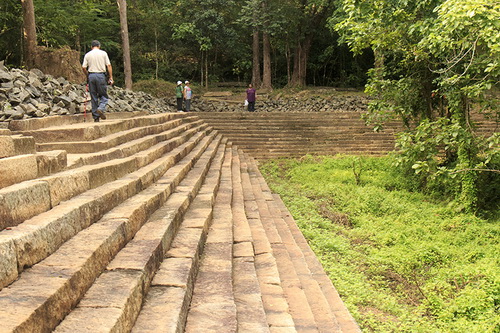Explore the Mystical Ritigala: An Ancient Monastic Sanctuary in Sri Lanka
Ritigala, a mystical and serene destination nestled in the heart of Sri Lanka, offers a unique blend of natural beauty, historical intrigue, and spiritual tranquility. Located in the North Central Province, Ritigala is a must-visit for tourists seeking an off-the-beaten-path experience that delves deep into the island’s rich cultural and religious heritage. This ancient monastic sanctuary, surrounded by lush forests and dramatic landscapes, is an ideal spot for history enthusiasts, nature lovers, and spiritual seekers.


Ritigala has a history that spans over two millennia. The site is believed to have been a significant religious center during the early centuries CE, serving as a sanctuary for Buddhist monks. The name Ritigala is derived from the words “Riti” (a kind of tree) and “Gala” (rock), indicative of the area’s natural environment. The Ritigala mountain range, rising to a height of 766 meters, was considered sacred and was home to a thriving monastic community.


Ritigala is renowned for its well-preserved ruins and ancient architectural wonders that reflect its historical and spiritual significance:

Ritigala Monastery: The primary attraction at Ritigala is the ancient monastic complex, which includes meditation platforms, stone bridges, and remnants of ancient structures. The monastery, dating back to the 1st century BCE, served as a retreat for Buddhist monks who sought solitude and meditation amidst the tranquil surroundings.

Meditation Platforms (Padhanaghara): These platforms, unique to Ritigala, were used by monks for meditation and spiritual practice. Made from massive stone slabs, the platforms are intricately designed and strategically placed to provide seclusion and a serene atmosphere.

Ancient Stone Pathways: Ritigala is interspersed with ancient stone pathways and staircases that connect various parts of the monastery. These pathways, shaded by the dense forest canopy, create a mystical ambiance as you explore the site.

Banda Pokuna: This ancient man-made reservoir, located at the base of the mountain, served as a water supply for the monastery. The reservoir is a testament to the advanced hydraulic engineering of ancient Sri Lanka.


Ritigala is not just an archaeological wonder but also a biodiversity hotspot. The Ritigala Strict Nature Reserve, encompassing the monastic site, is home to a diverse array of flora and fauna:


Ritigala continues to be a place of spiritual significance. The serene environment and ancient ruins attract those seeking peace and meditation. The site is also associated with various legends and myths, adding to its mystical allure:


Enhance your visit to Ritigala by exploring the surrounding attractions:





Ritigala offers a unique and enriching experience, blending historical intrigue, spiritual depth, and natural beauty. Whether you are a history enthusiast, a nature lover, or a spiritual seeker, Ritigala provides an immersive journey into Sri Lanka’s ancient past and its enduring traditions.
Embark on a journey to Ritigala and explore the sacred ruins, meditate amidst the tranquil forest, and soak in the breathtaking views from the ancient pathways. Ritigala stands as a testament to the spiritual and cultural legacy of Sri Lanka, inviting visitors to delve into its mystical history and natural splendor.



This is the official website of the Ministry of Tourism, Republic of Indonesia. The contents listed on this website are intended for informational purposes rather than commercial. Any displayed sale is meant as a token of partnership and will always redirect you to our partners’ sites.